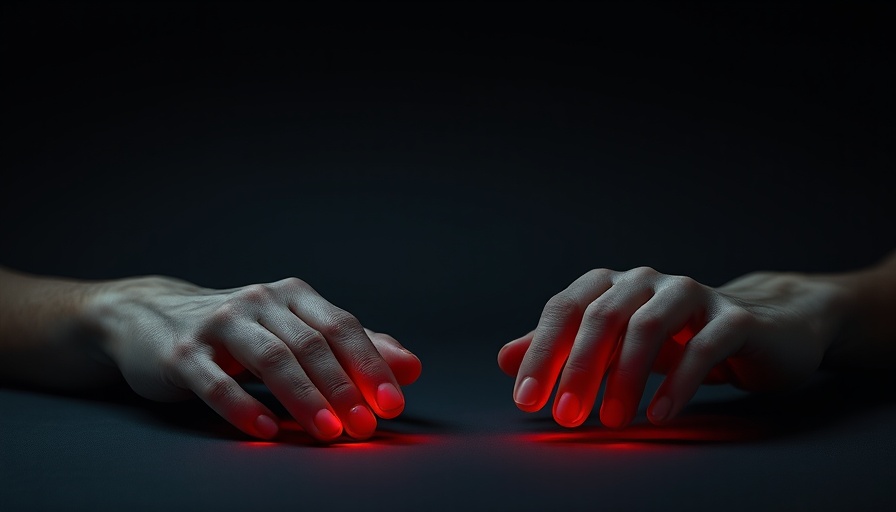
Understanding the Rubber Hand Illusion: A Gateway to Pain Relief
The rubber hand illusion is not merely an intriguing psychological phenomenon; it offers profound implications for pain management. Recent research from the Ruhr-Universität Bochum has showcased the potential of this visual trick in lessening pain perception. When participants could see a rubber hand while their actual hand was hidden, they tended to perceive the rubber hand as part of their own body. This perception can play a pivotal role in how they experience pain triggered by heat.
How the Experiment Worked: A Deep Dive into Pain Thresholds
In the study published in the journal *PAIN Reports*, researchers aimed to determine significant pain thresholds using a carefully controlled setup. Involving 34 right-handed participants, the experiment required them to hide their left hand behind a screen, placing it on a device called a thermode that can heat under regulated conditions. Instead of their actual hand, participants focused on a rubber hand illuminated with red light. They continuously rated the pain experienced, revealing the extent of how the rubber hand illusion can diminish pain perception.
The Power of Visual Influence on Pain Perception
The findings reported a compelling outcome: Under conditions where the rubber hand illusion was in effect, participants reported significantly reduced pain levels compared to control conditions. This demonstrates a broader principle known as multisensory integration, where sensory inputs combine to influence our perception of reality. When participants perceived the rubber hand as part of their body, they experienced a diminished sense of pain, suggesting a fascinating interplay between visual stimuli and sensory experiences of discomfort.
Visual Analgesia: The Neurological Background of Pain Reduction
Professor Martin Diers emphasized that our understanding of the mechanisms behind the rubber hand illusion dovetails with a phenomenon referred to as visual analgesia. This is the idea that seeing the body part involved in pain can mitigate the experience of that pain. However, the exact neural processes underlying this phenomenon are not yet fully understood, posing further questions for future research into brain and pain interactions.
Implications for Health and Wellness: A New Approach to Pain Management
The implications of this research extend well beyond theoretical musings. As healthcare continues to evolve, innovative methods like the rubber hand illusion could provide alternative therapies for those suffering from chronic pain conditions, such as complex regional pain syndrome. Finding ways to engage the brain’s perception could lead to tailored interventions that improve the quality of life for millions.
Looking Ahead: Future Research and Potential Applications
The path forward is lined with possibilities. By refining techniques based on these findings, practitioners might develop new therapies that use visual and sensory manipulation to provide relief without the need for pharmacological interventions. This could reshape our approaches within health and wellness sectors, and potentially drive innovation in community health initiatives aimed at pain management.
How Can You Explore This Topic Further?
For those interested in health and wellness and particularly in alternative therapies, engaging with ongoing developments in pain management techniques can provide valuable insights. As research expands, keeping abreast of findings regarding the rubber hand illusion and similar phenomena can be critical. Whether through community health events or wellness articles, exploring these advancements allows individuals to make informed decisions about their health care paths.
 Add Row
Add Row  Add
Add 




 Add Row
Add Row  Add
Add 


Write A Comment